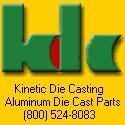In her best selling book, “Personal History,” Katherine Graham noted that her father, Eugene Isaac Meyer, determined early on that his life would be divided into thirds.
In the first third, he would learn. In the second, he would earn, and in the third, he would “return”. Return was defined as, “giving back” or providing expertise and service to people and institutions that might benefit.
A native of Los Angeles, Meyer grew up in San Francisco, graduating from Yale in 1895. By 1915, at age forty, his net worth was $40 million. Meyer then began to “return”, first serving President Woodrow Wilson as a “dollar a year man” to help the country through World War I. He later served Presidents Coolidge, Hoover and Truman in various high level positions, including becoming the first chairman of the Federal Reserve.
In 1933, while in Washington D.C., Meyer purchased the Washington Post newspaper out of bankruptcy and spent the next twenty years turning it into a viable enterprise.
Meyer was not the first person to discover that real life often gets in the way of plans and dreams. Without having an open mind to constant learning, even the extremely successful Meyer would have likely failed in his attempt to turn the newspaper around.
While Meyer’s banking and financial background was solid, running a newspaper was significantly different from his previous experiences. What he had to learn he had to do on the job. Meyer paid a heavy price as the paper endured losses for almost 20 years before finally turning a profit. It made money only after a lot of hard work, focus and overcoming considerable difficulties. Later, it became one of the first global multi media companies.
Meyer never actually did divide his life into thirds; circumstances would not allow him to. As it turned out, he discovered that learning, earning and returning fit together like lanes on a track. The lanes are parallel; are intertwined and are not separate activities defined by the ages or stages of life.
Most owners see themselves as successful; just ask them. Many of them could be incrementally more successful if they understood the concept of the parallel tracks. When the concept is actually applied and maintained, there is no limit to how successful an owner might become.
The challenges and complexities of business no longer allow anyone who wishes to continue to own a business to simply say “I’ve learned enough.” Yet there are many owners possessing an arrogance or ignorance that implies that they already know everything they need to know. These individuals hide behind the title of owner as if it were a magna cum laude degree of all known business knowledge available in the universe.
Economic reality no longer permits an owner to believe “My business model never needs to change.” Yet there are owners who fail to see that if Fortune 500 companies can crumble and disappear literally overnight, so can their much smaller businesses. The difference is that when their smaller company fails, it won’t make the headlines.
The need to be part of a greater society beyond paying required taxes no longer allows an owner the ability to stop returning or giving to the community they live and work in. The Signal, for example, is part of “Think Santa Clarita Valley” a program to create awareness for consumers and businesses to spend dollars locally, preserving businesses and jobs.
The hard truth is that an owner can never stop learning, can never stop strategizing how to keep making money and can never ignore that they are part of a community.
Where should an owner focus their learning today? The first is marketing (how to make the phone ring); the second is sales (how to close the deal). The third is management (how to get more productivity from those on the payroll).
What should an owner do regarding earning today? The first is improving the business model (turning customers into clients). The second is strategizing how to raise prices without impacting client relationships. The third is eliminating or reducing inconsequential expenses.
How can an owner return something to their community? First, resolve to assist a single organization at one time. Second, the organization must have a need to appropriately employ the owners existing skills, talents and abilities. Third, working with others, the owner should work to create a stronger, stable and self sufficient organization. Fourth, when that mission is accomplished the owner should move along to potentially help another organization in need.
Every owner needs a track to run on. Will yours be learn, earn and return or something less interesting or satisfying?
Super Job For You gives information on how to get a job and how to hire good people. If you are looking for Cast Parts Jobs look at this website. This Castings Blog will give you more information you can use for manufacturing.



